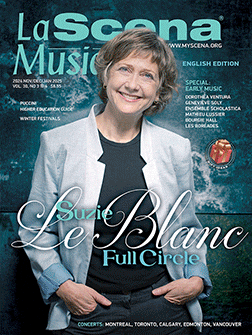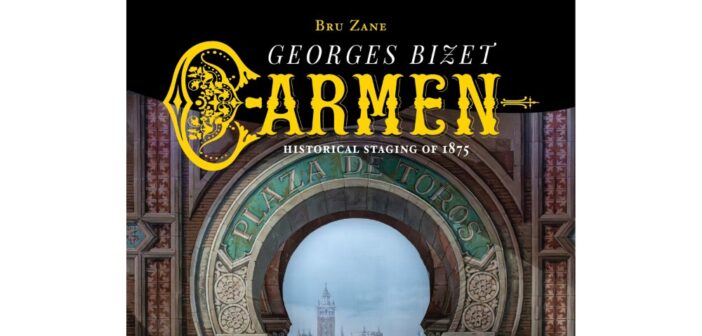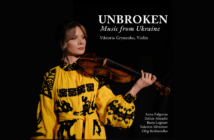
This page is also available in / Cette page est également disponible en:
![]() Francais (French)
Francais (French)
-
Palazetto Bru Zane3.5
Bizet: Carmen
Deepa Johnny, mezzo-soprano; Stanislas de Barbeyrac, tenor; Nicolas Courjal, bass; Iulia Maria Dan, soprano; Choeur d’enfants de la Maîtrise du Conservatoire de Rouen; Choeur accentus / Opéra de Rouen Normandie; Orchestre de l’Opéra de Rouen Normandie; Ben Glassberg, conductor
Bru Zane DVD, 2024
Palazetto Bru Zane is known for its meticulously produced audio recordings of French works of the long 19th century, often of some obscurity like Saint-Saëns’s operetta Phryné. These recordings usually involve the creation of a new performing score based on best scholarship and carefully researched performance practice. The CD recordings are typically accompanied by a substantial book containing essays on the research and historical documents such as contemporary newspaper reviews.
Bru Zane’s first foray into video is rather different. Far from choosing an obscure work, they have gone for Bizet’s Carmen and no attempt has been made to interrogate its musical problematics. The focus, instead, is entirely on recreating the original staging of 1875, which happens to be exceptionally well documented. Musically, it uses the modern standard performing score with the normal cuts, an orchestra of modern instruments, and recitatives rather than the original spoken dialogue. To all intents and purposes it’s a modern performance staged on a simulation of the 1875 stage.
So what can we say about the staging? There was plenty of archival material to work with, including colour lithographs of the sets and costumes. Also, a stage manager’s ”book” with all the blocking and placement of props that was used for early revivals. That’s all pretty definitive. What’s less clear is what the singers did when they got to where they were supposed to be on stage. The notion here is that there was a well-understood ”library’” of stock movements and gestures that the singers would have used.
Set design is largely flats and architectural elements. It works quite well for the Act 2 interior setting, somewhat less so for Acts 1 and 4, while Act 3 with its plywood rocky gorges looks pretty ridiculous. Costumes are very closely based on the lithographs. It’s clear that spectacle was the object and there is extravagant use of newly available (in 1875) synthetic dyes which allow a much more vivid palette than earlier natural dyes.
Lighting is designed to simulate gaslight. It’s generally fairly dim and very warm in colour. There are no spotlights—therefore, if the singers are to be seen clearly, they have to be placed where they can be illuminated by the footlights. This leads to a lot of scenes with the singers arranged in a line along the stage apron.
One element that surprised me is the extensive use of really excellent dancers, a bevy of actors and even mimes. It’s all very busy and lively and there seems to be almost an obsession with keeping the audience from getting bored. It also doesn’t downplay the sexier elements. with Carmen practically tearing Don José’s shirt off at one point.
Ironically, the overall effect of all this careful research is a production that really doesn’t look a whole lot different from a modern ”conservative” Carmen. No one, I think, is going to radically reappraise Carmen on the basis of this production—unlike, say, the Bru Zane CD of Spontini’s La Vestale or Meyerbeer’s Robert le Diable, which are revelatory.
Overall, it’s enjoyable enough to watch but I wonder whether the concept really makes sense. Personally I would have preferred they go all the way and do with the music what Bru Zane usually does. Even with that, we could not possibly experience what the 1875 audience felt. In its day Carmen was revolutionary and shocking, even transgressive. It had sex and murder (the first shown on stage at the Opéra Comique). It would take a good deal more than this production to shock a contemporary audience.
Moving on from the staging, what do we get musically and dramatically with this recording? It’s pretty good in a rather conventional way. Canadian mezzo-soprano Deepa Johnny is a very good Carmen with a lovely smoky mezzo and a genuine trill. She nails the classic arias and she can act and be dead sexy, too. Her Don José, Stanislas de Barbeyrac, is everything one could want from a French tenor with ringing high notes, ardent acting and matinee looks. The weak link, to my mind, is Nicolas Courjal as Escamillo. He attempts, but can’t really pull off, the necessary swagger—and his bass tone is rather covered with a wider vibrato than I find pleasant.
Soprano Iulia Maria Dan makes a fine Micaëla with the necessary sweetness of tone but also, a more dramatic register to call on. The other roles are more than adequately covered. All the cast, male and female , are good movers and integrate well with the dancers in lively fashion. The chorus and orchestra of l’Opéra de Rouen Normandie are very good and Ben Glassberg conducts stylishly. It’s a high-class performance.
Video direction is just OK. The lighting forces the video director to focus on the principal characters at the front of the stage, but there’s clearly a lot more going on upstage than we see. I can’t really comment on technical quality as supply-chain delays have made it necessary to review from a streamed video. The actual release will include both Blu-ray and DVD with all the usual options. Based on the stream though, I would expect them to be well up to standard. As always with this label, the documentation is fantastic with multiple essays and lots of reproductions of the lithographs that the production is based on.
I don’t think this offering is either an ideal introduction to Carmen or a replacement for the many videos with starrier casts from major houses. That said, for those who have seen many versions of Carmen or those interested in historical performance practice it’s really quite interesting.
This page is also available in / Cette page est également disponible en:
![]() Francais (French)
Francais (French)














